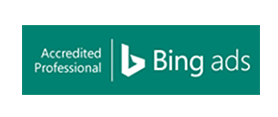Despite some serious aggression against manipulative linking practices of late you still can’t get away from the fact that links are crucially important for SEO. So, it naturally figures that if you want to compete, great content, whilst also critically important still needs to be supported by strong links from external sites.
Great content = Great Links (right?)
Well, if only, if only the world worked this way but the fact is, whilst you can write great content, truly killer stuff, without links, it often may not be found, and this is certainly true for newer sites or those in a competitive niche.
So, to be the best you can be and get people looking at that great content of yours then you need to build links from external sources. Often, these links will come where you have engaged in a discussion and may refer the reader back to your site for more information on the topic but some of these links should be intended to help improve the overall ranking of your site and the rank or position of a given page or piece of content.
Building Natural Anchor Text
This is almost a complete oxymoron and you are hereby attempting to emulate the organic or build links in a way that seems natural. So, whilst this is a bit of a daft principle, it really boils down to understanding what is natural and safe looking and ensuring any link building you do works within these safe guidelines and only makes the link profile super-natural.
The Research
As ever, the best approach is always governed by the most recent research and we should always look to base our approach on every bit of intelligence we can gather. So, let’s review a few key facts and figures.
1. SEOMoz Ranking Factors 2011
Every few years SEOMoz publish a series of ranking factors and we can use this to understand how things have changed in search and to ensure our efforts are having the most positive impact. The most recent set of data indicates that the two top factors in ranking a page are both link based and with page level link metrics and domain level link authority both coming in at 21% each giving us a grand total of 42% of a page’s ranking relies on good, old-fashioned links.
2. Link Penalties and Ratios
Within the SEO world we have several companies that keep track of inbound links and rank data for thousands upon thousands of sites and with the recent link spam penalties (Penguin) these sites are in a unique position to analyse the link profiles of the sites that did and didn’t get hit. The most notable of these is by a company called MicroSite Masters and is certainly worth a read (and is linked in the references below) but I will summarise the findings for the purposes of building a natural looking link profile here.
The first thing that was looked at was exact match keyword anchors and it was found that if 50% or more of your links were not targeted keywords then you did not get affected by Penguin. Subsequently, if 60% of your anchors are targeted keywords then you were likely (but not guaranteed) to be penalised.
A third factor that often gets overlooked when we consider only anchor text is the percentage of links coming from topically relevant sites. What was found here was that the more links you had from topically relevant sites then the more unlikely it is that you would be penalised. Likewise, if all your links came from unrelated sites you had a 50% chance of getting hit.
So, in a nutshell, a combination of these three factors in your link profile is going to bring some Penguin pain your way:
- aggressive anchor text in the 60% plus range
- a lack of branded URLs as anchors
- a high percentage of links from topically irrelevant sites
3. Types of Pages and Types of Links
The final factor to consider is just what is being linked to on your site and the different way in which certain pages are to be linked to. Again, I refer to another comprehensive analysis conducted by the good folks at Distilled and published over at SEOMoz. The purpose of this report was to identify several sites in various business areas that looked like they had good, honest, organic links and to analyse the percentage of link types to category and product pages and determine if there was any variation.
Homepage – when considering a homepage, branded links should always come in at around 70% of the total and this could include several URL variations, the site name and other branded terms rather than targeted keywords. By this rational, it is then okay to weave some of your keywords in a natural and varied way into the other 30%
Category page – the distilled report shows us that category pages will traditionally only have around 25% of their links as targeted keyword terms. The rest of the links will be made up of various other factors related to the target page with the largest being the exact URL (25%) which is exactly how I often link to pages on external sites.
Product or detail pages – these pages tended to have more keyword focused links as you would imagine due to the specific purpose of the page. These links would be made up of exact match and partial match phrases to the tune of around 46%.
- Homepage keyword anchors should be varied between exact and partial match and under 30%
- Category page keyword anchors should be varied between exact and partial match and under 25%
- Product page keyword anchors should be varied between exact and partial match and under 45%
The 10 Golden Rules of Anchor Text
So, based on the above, we can now start to build a set of rules or guidelines to help us build this super-natural looking link profile and to ensure we don’t stray over into the realms of manipulative practices. These guidelines can be used to review individually penalised pages and a site’s entire link profile if required. And remember, the penguin algorithm works on a per keyword basis so whilst you have a given scope or percentage for anchor text then don’t use this all for one term – keep it varied, use exact match, partial match and keep it within the safe guidelines for that specific page or piece of content.
Additionally, the word on the street is that the penguin filter is going to get more aggressive and that Google will be turning up the dial, much like they did with Panda till they are sure they have punished the bad guys and effectively policed aggressive linking tactics. With that in mind, the suggestions below use the boundaries set by the data and offer suggestions to expand on these in a conservative way to play it safer than safe.
- Aim to have at least 50% of your links from topically relevant documents and ideally aim higher still
- Ensure targeted keyword anchors only make up 30% to 50% of your total link profile
- Branded links (www.mysite.com, mysite.com) should make up between 70% and 50% of your total link profile
- Ensure at least two of your top five anchors are branded URLs and ideally, aim for three, four or even five (check out Wikipedia’s anchor text for an example of the dominance of natural branded anchors)
- Link to a wide range of documents across your site
- Use a wide range of anchor text across all documents
- Product or article page keyword anchors should be less than 45% and varied
- Category page keyword anchors should be less than 25% and varied
- Homepage keyword anchors should be less than 30%
- Ensure you have some ‘click here’, ‘link’ type anchors
Summing up
The intention of this post is to gather the most relevant research together and use that to help us formulate a blueprint for a safe and natural looking link profile. You can use these guidelines in an effort to repair a broken profile and they can certainly be used to help you stay within safe limits with your link building efforts.
Remember, though, this is the Wild West, and correlation is often not causation and there is likely a lot more going on behind the scenes that we are not yet aware of and Google may still ramp up the aggression. So if you try to use these ratios to game the system and build dodgy links then you may still get caught out. These recommendations are best used as a tool to ensure a sensible anchor text strategy as part of a larger, white hat link building campaign. Just play nice.
As ever, I would love to hear your comments and experiences out in the trenches and if you need any help with Google Penalties or need an SEO consultant to help you formulate or execute a link building strategy then please give me a shout.
References
- SEOMoz Ranking Factors 2011
- Microsite Masters Penguin Analysis
- Distilled Anchor Text Distribution Analysis (published at SEOMoz)






